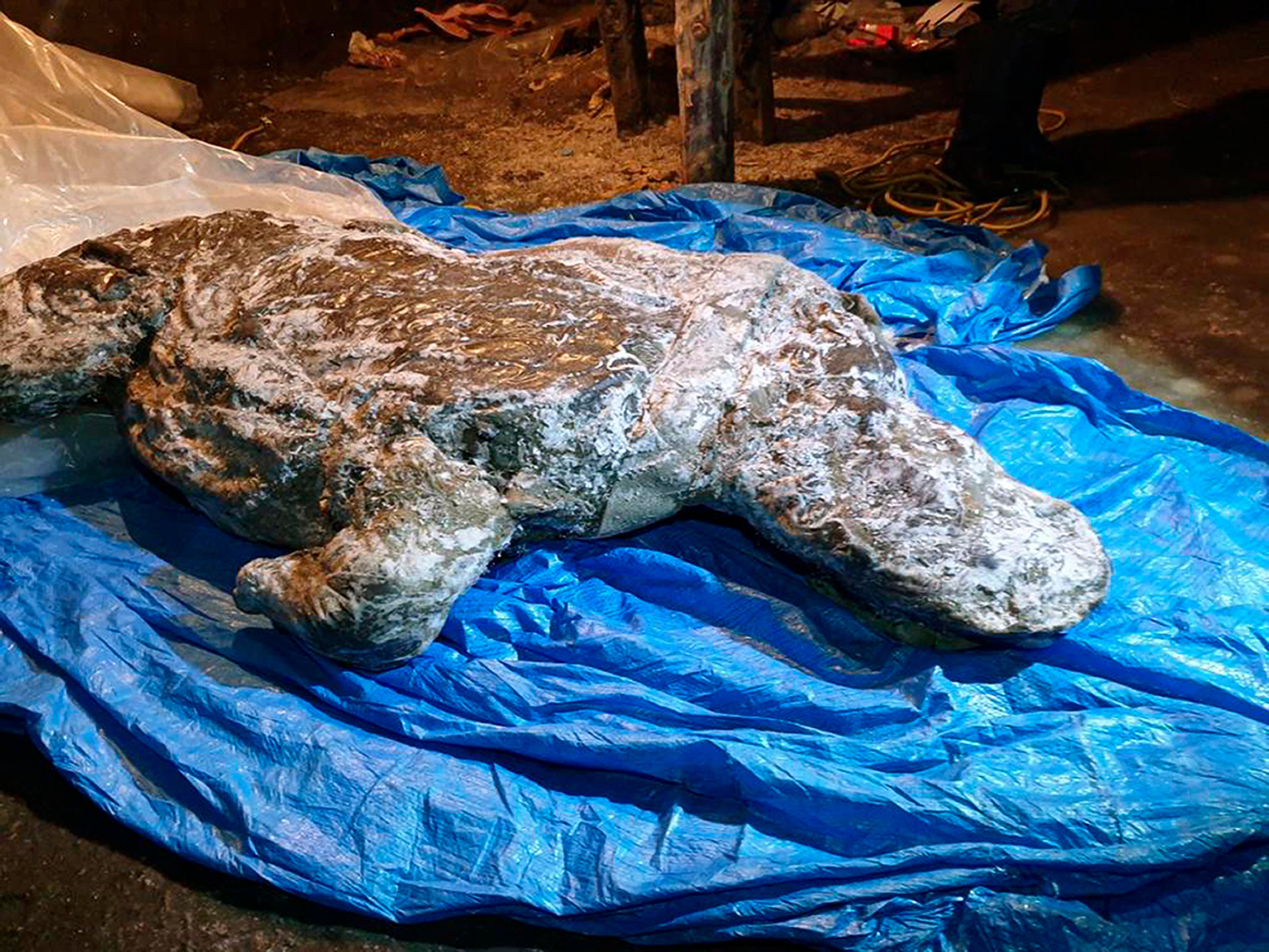Well-preserved Ice Age woolly rhino found in Siberia
A well-preserved Ice Age woolly rhino with many of its internal organs still intact has been recovered from permafrost in Russia’s extreme north

Your support helps us to tell the story
From reproductive rights to climate change to Big Tech, The Independent is on the ground when the story is developing. Whether it's investigating the financials of Elon Musk's pro-Trump PAC or producing our latest documentary, 'The A Word', which shines a light on the American women fighting for reproductive rights, we know how important it is to parse out the facts from the messaging.
At such a critical moment in US history, we need reporters on the ground. Your donation allows us to keep sending journalists to speak to both sides of the story.
The Independent is trusted by Americans across the entire political spectrum. And unlike many other quality news outlets, we choose not to lock Americans out of our reporting and analysis with paywalls. We believe quality journalism should be available to everyone, paid for by those who can afford it.
Your support makes all the difference.A well-preserved Ice Age woolly rhino with many of its internal organs still intact has been recovered from permafrost in Russia s extreme north.
Russian media reported Wednesday that the carcass was revealed by melting permafrost in Yakutia in August. Scientists are waiting for ice roads in the Arctic region to become passable to deliver it to a lab for studies next month.
It’s among the best-preserved specimens of the Ice Age animal found to date. The carcass has most of its soft tissues still intact, including part of the intestines, thick hair and a lump of fat. Its horn was found next to it.
Recent years have seen major discoveries of mammoths, woolly rhinos, Ice Age foal, and cave lion cubs as the permafrost increasingly melts across vast areas of Siberia because of global warming.
Yakutia 24 TV quoted Valery Plotnikov, a paleontologist with the regional branch of the Russian Academy of Sciences, as saying the woolly rhino was likely 3- or 4-years-old when it died.
Plotnikov said the young rhino likely drowned.
Scientists dated the carcass as anywhere from 20,000- to 50,000-years-old. More precise dating will be possible once it is delivered to a lab for radiocarbon studies.
The carcass was found on the bank of the Tirekhtyakh river in the Abyisk district, close to the area where another young woolly rhino was recovered in 2014. Researchers dated that specimen, which they called Sasha, at 34,000 years old.